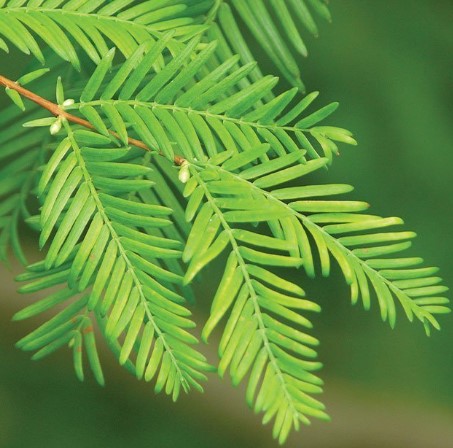Description
Dawn Redwood Tree – 1 Yr Old Seedling
The Dawn Redwood Tree (Metasequoia glyptostroboides) is a fast-growing, deciduous conifer known for its striking appearance and historical significance. Once thought to be extinct, this ancient tree was rediscovered in China in the 1940s and has since become a popular choice for landscapes and reforestation efforts. With its unique feathery foliage and pyramidal shape, it makes an eye-catching addition to any garden or park.
- Zones: 4–8

Native Range
Native to China, the Dawn Redwood was once widespread across North America and Europe. It was rediscovered in the 1940s in a small region of China’s Sichuan Province. Due to its adaptability, it has since been planted in various regions worldwide.
Growth and Form
- Height: Grows rapidly, reaching 40
–60 feet in 10 years. Mature trees can reach 100 feet or more. - Spread: The tree develops a broad, conical canopy with a spread of 15–25 feet.
- Growth Rate: Fast-growing, typically adding 24–36 inches annually under favorable conditions.
- Foliage: The feathery, needle-like leaves are bright green in spring and summer, turning a rich golden-brown in fall before dropping.
- Bark: The bark is reddish-brown and fibrous, peeling in strips as the tree matures.
Ecological Benefits
- Wildlife Habitat: Dawn Redwood provides shelter and food for birds and small mammals. Its seeds attract squirrels and birds like finches.
- Carbon Sequestration: Excellent at absorbing carbon dioxide, contributing to a healthier environment.
- Flood Tolerance: Prefers wet soils and can help control erosion along stream banks and wetlands.

Hardiness and Climate Tolerance
- Hardiness Zones: 4–8, making it suitable for a wide range of climates, from cold winters to mild summers.
- Cold Tolerance: It is frost-hardy and can withstand cold temperatures as low as -25°F (-31°C).
- Drought Tolerance: Dawn Redwood is moderately drought-tolerant once established but thrives in consistently moist soils.
- Soil Adaptability: Prefers deep, moist, and well-drained soils but is adaptable to a range of soil types, including clay and loam.
Planting and Care
- Planting Location: Full sun to partial shade. Best growth occurs with at least 6 hours of direct sunlight daily.
- Soil Preparation: Prepare a moist, well-drained planting site. Amend soil with organic matter if needed for improved drainage and fertility.
- Watering: Keep soil consistently moist during the growing season, especially in dry weather. Water young trees regularly until established.
- Pruning: Minimal pruning is needed, but remove any dead or damaged branches in early spring before new growth starts.
- Fertilization: Fertilize in early spring with a balanced, slow-release fertilizer to promote healthy growth.
Potential Problems
- Root Rot: In poorly drained soils, Dawn Redwood may be susceptible to root rot. Ensure good drainage to avoid this issue.
- Pests: Dawn Redwood can sometimes attract pests like aphids or scale, but they generally cause minimal damage. Regular inspection can help control these issues.
- Deer: Deer may browse on the young foliage, but mature trees are generally deer-resistant.
Uses
- Reforestation and Landscaping: Its fast growth and striking appearance make it perfect for reforestation projects or large landscape gardens.
- Shade Tree: With its dense foliage and tall stature, it provides excellent shade for parks, yards, and public spaces.
- Wetland and Stream Bank Planting: Dawn Redwood thrives in wet conditions, making it ideal for planting near water features and wetland restoration projects.
- Timber Production: The wood of the Dawn Redwood is light, strong, and resistant to decay, making it valuable for certain types of construction and woodworking.








Reviews
There are no reviews yet.